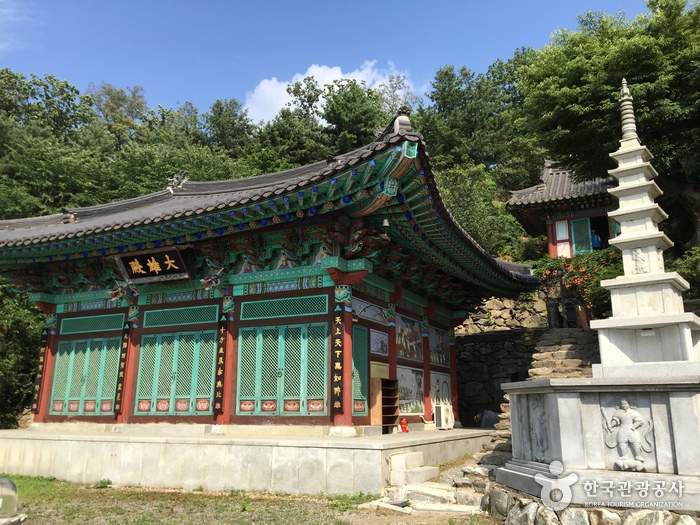Discover the Tranquility and History of Manggyeongam Hermitage
Welcome to Manggyeongam Hermitage, a historic and serene tourist destination nestled in the heart of Bokjeong-dong, Seongnam, Gyeonggi-do. Known for its beautiful view of Seoul, this hermitage holds a significant place in the history of Korea, especially during the late Goryeo and early Joseon periods. As you explore this sacred site, you will uncover fascinating stories of kings, princes, and the Chilseong faith.
A Sanctuary of Prayer and Peace
Manggyeongam Hermitage is renowned as a place where kings and royalty sought solace and prayed for the well-being of their subjects. In fact, it was here that Prince Pyeongwon, the seventh son of King Sejong, and Grand Prince Jean built an altar and pledged filial piety. Step into the shoes of these historical figures as you imagine their prayers echoing through the tranquil halls of the hermitage.
The Connection to the Chilseong Faith
One of the most fascinating aspects of Manggyeongam Hermitage is its association with the Chilseong faith, centered around the worship of Chilseong, also known as the Seven Stars. As you explore the hermitage, you will notice written records inscribed into the rock wall, offering insights into the beliefs and practices of this ancient faith. These inscriptions bear witness to the deep spiritual connection that has endured throughout the centuries.
An Original Work of Art: Rock-carved Seated Buddha
A true gem of Manggyeongam Hermitage is the Rock-carved Seated Buddha, an exquisite piece of art designated as Gyeonggi-do’s Tangible Cultural Asset No. 102. Nestled inside a deep hole in the rock, this original creation of the hermitage is a sight to behold. Take a moment to admire the intricate details and immerse yourself in the rich history that surrounds this sacred statue.
The Legend of Lee Gu-seung and the Hermitage
Legend has it that Lee Gu-seung, a famous sculptor, carved the Gwaneum Statue near the Rock-carved Seated Buddha and built Manggyeongam Hermitage in 1897. As you wander through the grounds, allow your imagination to transport you back in time to an era of artistic dedication and spiritual devotion.
Exploring the Surroundings
Adjacent to the hermitage, you will find a picturesque pond named “Bokumul,” which translates to “blessed sugared water.” This charming body of water lends its name to the neighborhood of Bojeong-dong and adds to the overall tranquility of the hermitage. Don’t forget to take a moment to reflect by the peaceful waters.
Within the hermitage grounds, you will also encounter notable structures such as Daeungjeon Hall (the main hall), Samseonggak Shrine (a shrine dedicated to three spirits), and Mireukjeon Hall. These buildings, although relatively recent additions, contribute to the overall spiritual ambiance and offer a glimpse into the ongoing reverence and worship that takes place within these hallowed walls.
Furthermore, do not miss the opportunity to marvel at the grandeur of the Mireuk Daebul statue (Great State of Maitreya Buddha) and the five-story stone pagoda. These impressive architectural wonders provide a sense of awe-inspiring beauty and a testament to the cultural significance of Manggyeongam Hermitage.
As you explore this historic and spiritual site, may you find peace, inspiration, and a deeper appreciation for the rich history and culture of South Korea. Enjoy your journey through Manggyeongam Hermitage.

